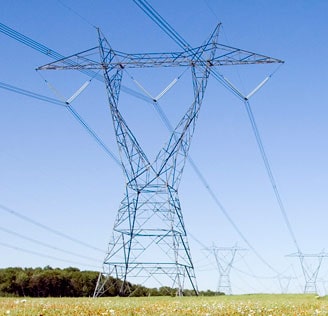Alberta’s weighted average Power Pool price for October’s month end is $63.21/MWh, a week-over-week drop of $2.81/MWh or 4.3%. Hourly demand in the province increased marginally by 46MW or 0.5%, which had a negligible impact on hourly pricing. Pricing volatility subsided on October 29th, as Path 83, a contributor of electricity import from Montana, returned to service. We did experience a slight increase in hourly pricing on October 31st at 12 MST, but this price only reached $50.70/MWh, nowhere near the highs experienced earlier in the month. Generator outages were minimal, with rolling outages at HR Milner and outages at Sundance 4.
The weighted average Hourly Ontario Energy Price (HOEP) is currently at 0.8¢/kWh for the month of November, a decline of over 27% or 0.3¢/kWh relative to October’s settled price. This price drop is driven by a favourable supply-demand spread, and a shift in the supply mix from gas to cheaper renewables. November’s average supply and demand levels have increased 6% (16,225MW) and 5% (14,635MW), respectively, compared to October. This supply-demand spread of approximately 11% is the largest spread observed since June, before the freeze to the Industrial Conservation Initiative (ICI) program. Sunday’s windy start to the month also saw wind gusts up to 80km/h in southern Ontario, causing wind generation to more than double compared to October (+110%, 2,544MW), while expensive natural gas decreased its supply by 16% (632MW). Nuclear’s baseload has remained relatively stable (9,281MW), while other remaining sources have decreased their supply: hydro (-4%, 3,680MW), solar (-8%, 58MW), and biofuel (-24%, 29MW). As November progresses and cooler temperatures start to settle in, we expect HOEP to creep up closer to 1.8¢/kWh, until strong cold fronts of the winter season set in and hike prices higher. Currently, with the first Global Adjustment estimated at 11.7¢/kWh, November’s total market price is 12.5¢/kWh.
In other electricity news, the start of November signaled the increase of the Ontario Electricity Rebate (OER) to 33.2%, as well as the introduction of new Time-of-Use (TOU) and Tiered rates. TOU rates are variable for the first time in more than six months when COVID-19 relief rates were introduced. To continue helping customers control their electricity costs, small businesses who are paying Regulated Price Plan (RPP) rates and have a smart meter have the choice to pay either TOU or Tiered pricing. A bill calculator on the Ontario Energy Board’s (OEB) website can be used to help decide which pricing plan best suits your consumption needs. For further information about OER eligibility criteria, new regulated price rates, or switching RPPs, customers are encouraged to contact their utility provider or the OEB.
– Mark Ljuckanov, Energy Data Analyst / Ryan Cosgrove, Energy Data Analyst








Add comment